So you’ve created your website. You’ve listed all your products and added the details of your services.
Why is nothing happening? No one’s visiting; no one’s buying.
The missing ingredient is website traffic.
If you want to turn your virtual ghost town into a thriving metropolis, you need to tell people about your site and make it easy for them to find it. Luckily, you don’t have to break out the megaphone.
If you want to generate more traffic, we have a stockpile of proven strategies and techniques to share — including content marketing, email marketing, community, and much more.
Let’s jump in!
What Does Website Traffic Mean?
In technical terms, web traffic is all the data that visitors to your site send and receive. But it’s really used to measure how many people are dropping in and where they’re coming from.
There are several categories of web traffic:
- Direct traffic: When someone types in the web address of your website or clicks a bookmark in their browser.
- Referral traffic: When a visitor clicks a link on another website that refers them to your site.
- Organic traffic: All traffic that comes from people searching online and clicking a link that is not sponsored.
- Paid traffic: You know those sponsored links at the top of the search results page? Every click here is registered as paid traffic.
More traffic is generally better. That said, you really want to attract people to your website who are genuinely interested in what you have to offer. New subscribers or customers are much more likely to come your way.
40 Foolproof Ways To Increase Website Traffic
Eager to start chasing traffic? We’re right there with you. Up next is a comprehensive list of proven techniques, from simple fixes to full-blown marketing campaigns.
Let’s start with the basics:
1. Optimize the Mobile Experience of Your Website
Over the past few years, the number of people browsing the web on mobile devices has eclipsed the number of desktop users.
What does this mean for your website?
If your site doesn’t work well on smartphones and tablets, users on these devices are unlikely to stick around. That means you’re throwing away loads of potential traffic.
Also, Google uses mobile-first indexing — which means that it primarily uses the mobile version of every website to index and rank search results. So, if your site is weak on mobile devices, you’re going to lose out on search traffic, as well.
To check whether your site is mobile-friendly, run it through Google’s own PageSpeed Insights tool. If the results aren’t up to snuff, consider updating the design of your website.
Make sure the new layout is:
- Responsive (i.e. adaptable to different screen sizes)
- Designed for touchscreens
- Easy to navigate
If you need help, our new Liftoff AI website builder can help you create a great new design in just 60 seconds!
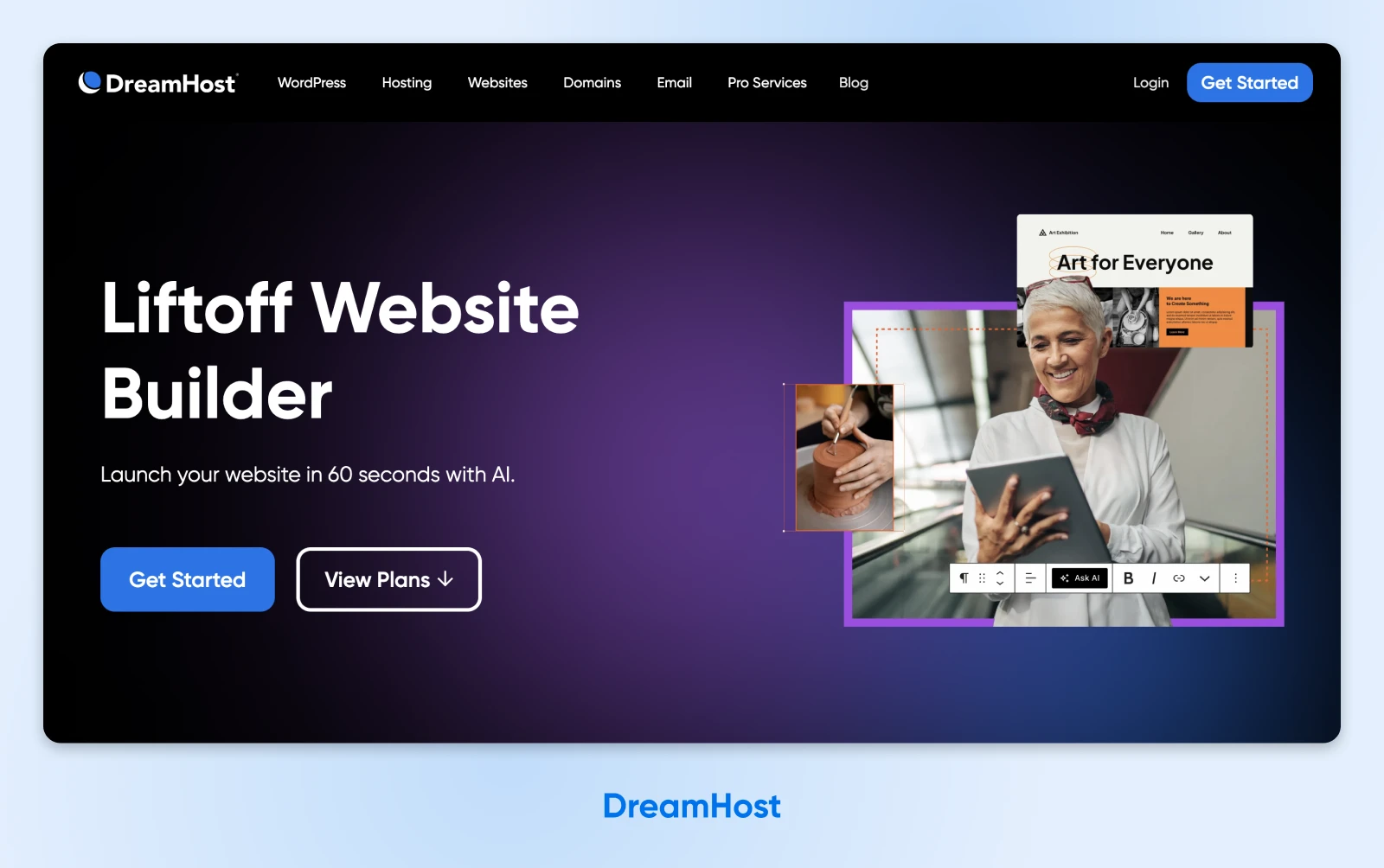
2. Create Long-Form Content
Google tends to prefer longer, in-depth content. And more visitors are likely to share a comprehensive guide rather than a quickstart tutorial.
In other words, it’s definitely worth creating some long-form content on your website.
This doesn’t mean pumping out words for the sake of it. Google won’t rank your posts if you’re publishing filler. The key is to pick a topic that has enough depth that you can provide lots of really helpful or entertaining content. We’re talking 1,000 words or more.
If that sounds like a challenge, you could try combining multiple shorter posts to make a comprehensive guide.
3. Update Stagnant Content
If you had the choice between a guide from 10 years ago or one published last month, which would you choose? Probably the more recent option.
The same goes for your users.If your site has been around for a while, check your historical traffic data on Google Analytics or Google Search Console. You may notice that some of your content performed well in the past, but is now fading away.
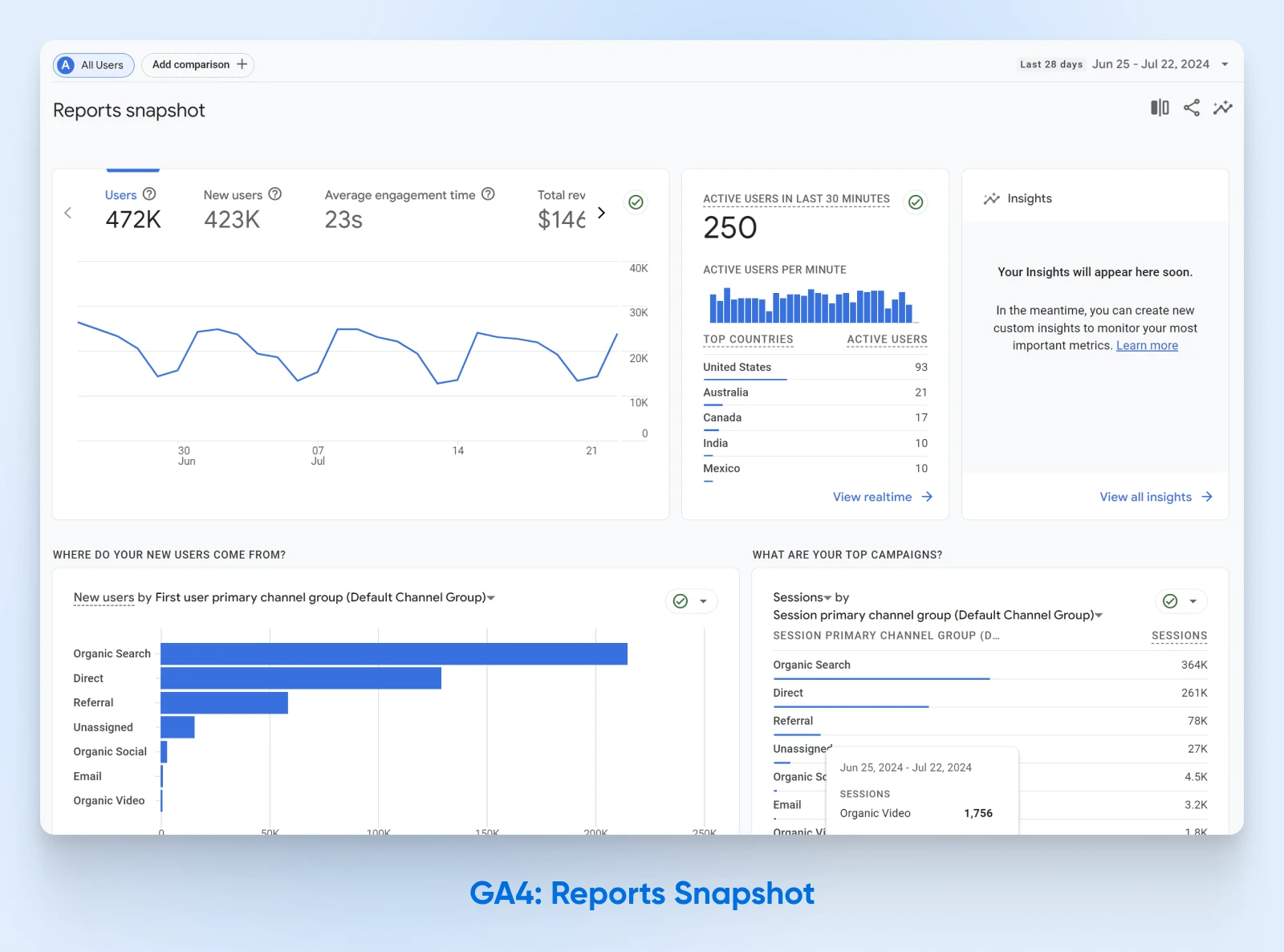
Don’t let go. You can give your content the kiss of life by giving it an update. That means:
- Checking your facts are still up to date.
- Fixing broken links.
- Adding any new information that’s relevant to the topic.
Updating older content is way quicker and easier than creating something new, so it’s worth scheduling regular updates in your calendar!
4. Create Eye-Catching Visual Content
While written content tends to attract traffic directly, visual content helps you to keep visitors engaged.
Say someone finds your blog post via search or through social media. If they see a wall of text, they may just dip. But if your lengthy guide is full of interesting graphs and thought-provoking photos, maybe they will stick around.
Other sites could link to your images, too — meaning more referral traffic.
Visual content can mean photos, videos, illustrations, and infographics. If you don’t have the budget for a professional designer, tools like Canva make it easy to create graphics yourself.
5. Try Guest Posting
Another way to pull in traffic from other sites is by guest posting — aka guest blogging.
Guest Blogging
Guest blogging, also known as guest posting, is the act of writing and publishing articles on other people’s websites. Guest bloggers usually write for free in exchange for exposure to a new audience.
This is where you share a post on someone else’s website, and include a link back to your site.
If you do guest posting right, it’s a win-win. The other person gets free content, and you get a free backlink.
Here are a few things to look out for when choosing a site you might want to guest post on:
- Does the site have a decent amount of traffic?
- Does it write mainly about your niche? (You’ll want to stay away from general “we-cover-everything” type sites.)
- Does it have respected or expert writers on its staff or guest post roster?
- Does the site have a lot of pages indexed by Google?
- Does the site have high social engagement metrics?
- Does the site match your target audience?
Always prioritize quality over quantity with guest posting. If Google thinks you’re trying to game the system, you could find yourself demoted in search results!
6. Add Social Share Buttons to Your Content
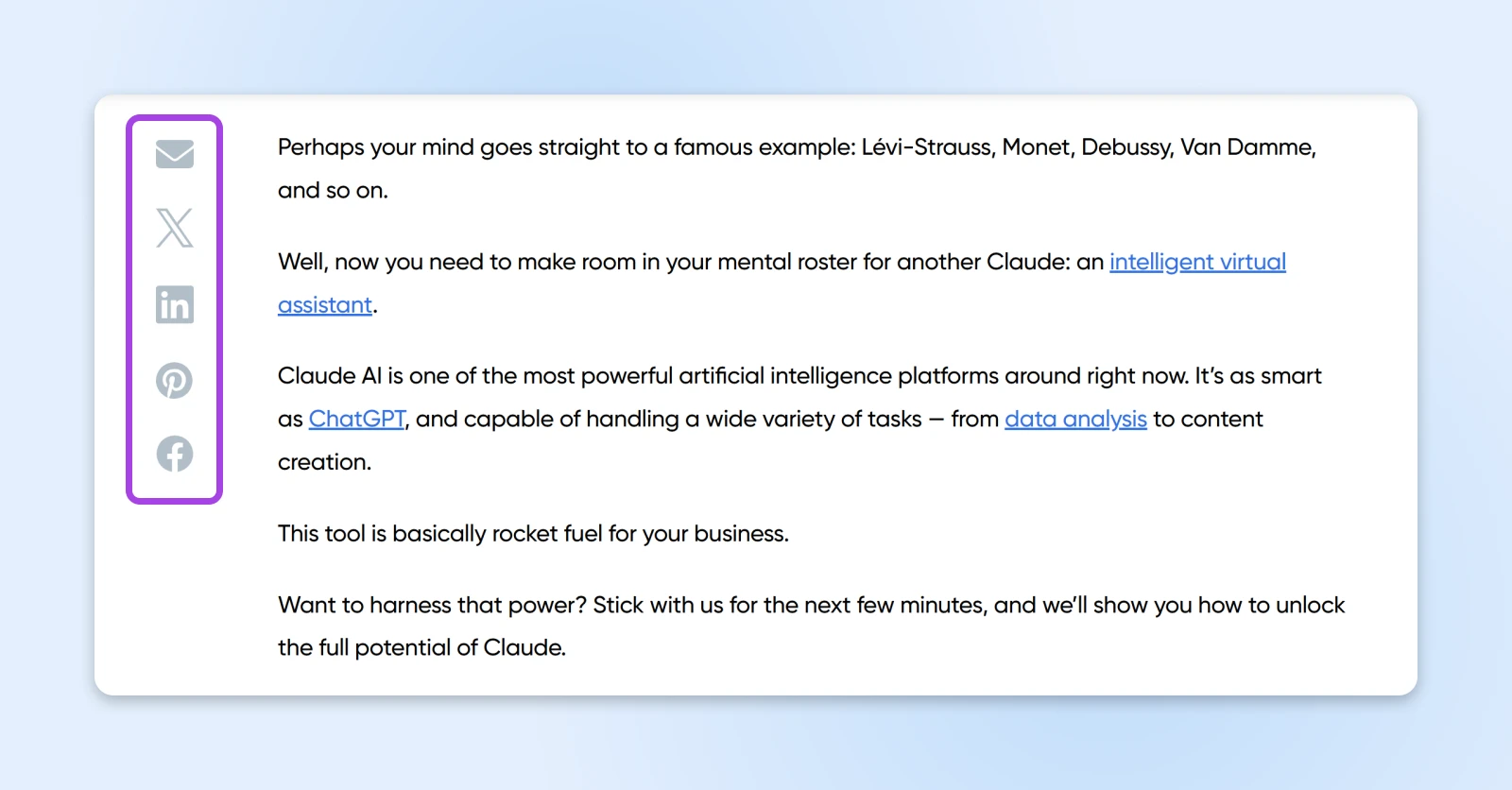
If someone visits your site and enjoys your content, they might consider sharing it with friends and followers. You can encourage this free advertising by making your content easy to share.
The best way to achieve this is to add share triggers and social media share buttons throughout your site. With one click, visitors can share a link on their favorite social media platforms.
Adding these buttons is easy, especially if your site runs on WordPress. Plugins like Jetpack allow you to insert social buttons anywhere and prioritize the social platforms you use.
7. Work on Your Social Media Game
You probably use social media to promote your site already. But there are a few steps you can take to drive more traffic back to your website:
- Optimize your profiles: Make sure your profiles include a link to your website. Tools like Linktree allow you to create a mini menu, meaning you can also link to individual pages and resources.
- Post about new content: Just published a new blog post? Be sure to shout about it on social media, and include a direct link.
- Add links in comments: Many social media professionals now put links in comments, because social media sites often penalize posts that include a link.
- Find your audience: Social media works best when you’re, well…sociable. Try to connect with your target audience and give them a reason to visit your website.
Check out our comprehensive social media marketing guide for more top tips!
8. Leverage Influencers in Your Niche
Unless you happen to be a social media star, there will be limits to the amount of traffic you can drive through your own accounts.
You can get around this problem by connecting with people who’ve already built an audience: influencers.
You’re probably picturing a Kardashian in your mind right now, but influencers aren’t always mega-celebrities. Many are experts or respected commentators in a very specific niche.
If you can find influencers for your niche and persuade them to share your content, you can reach many more potential visitors.
To harness influencer marketing, you first need to find some targets. Here are some dedicated tools that make the process easier:
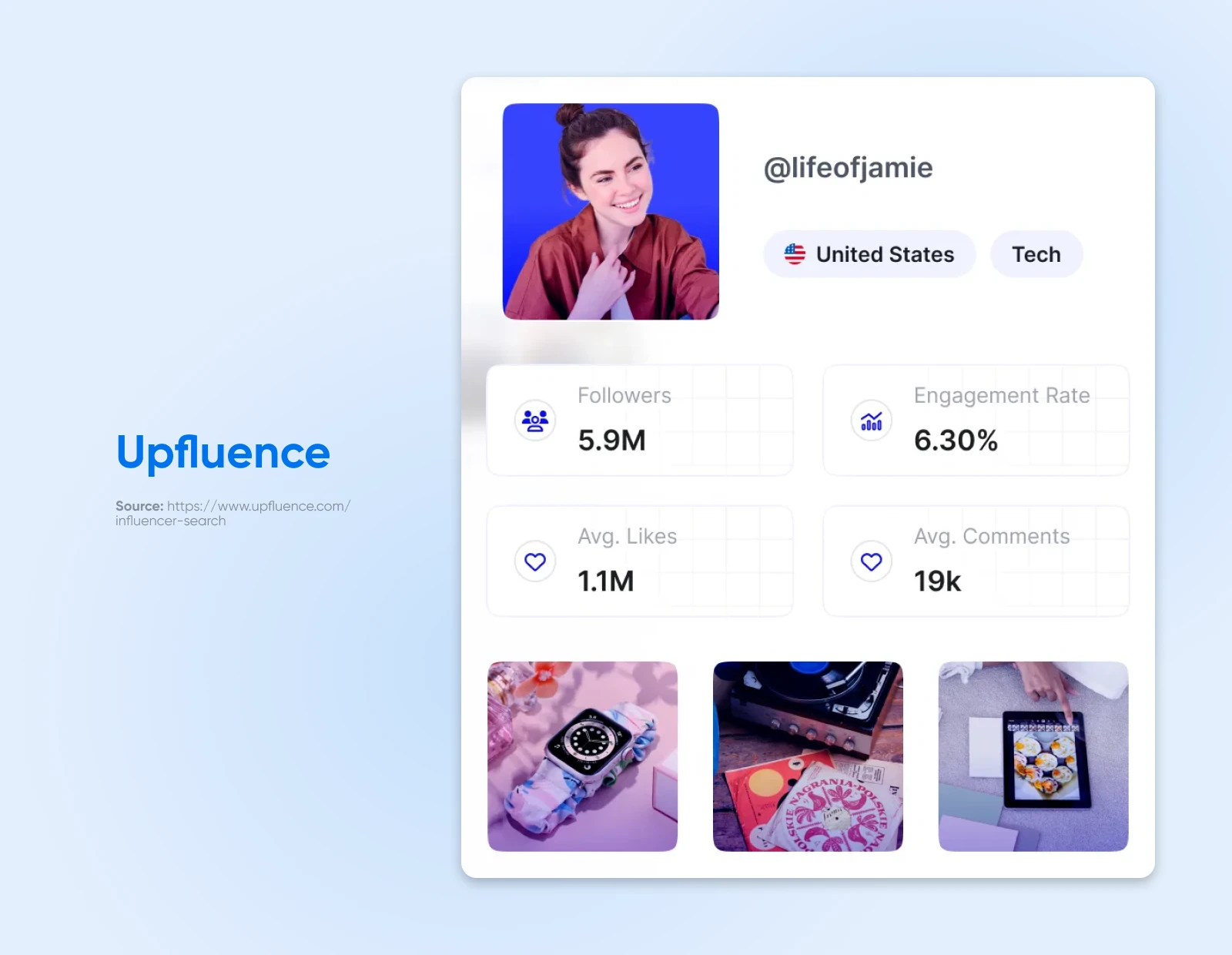
Once you know who you’re aiming for, you can try reaching out with your latest content or tagging them in your posts.
This tactic only works occasionally, so you could also offer a sponsored partnership that includes promoting your site.
9. Grow Your Email List
If someone enjoys one piece of content or a product on your website, there’s a fair chance they’ll like another.
The best way to turn these people into repeat visitors (and grow your traffic) is by putting them on your email list. You can then send out regular updates and lure them back to your site!
The tricky part is getting people to sign up — particularly if you don’t have that many visitors yet. You could try:
- Incentivizing sign-ups, with a discount or a giveaway, for example.
- Asking people to put in their email to access certain content.
- Adding sign-up forms and calls to action (CTA) across your site.
- Investing in social ads.
Want to learn more? Visit our guide to email marketing!
10. Conduct A/B Testing
Not sure what your visitors want to see? Try some A/B testing.
With this process, you create two versions of a web page. A certain fraction of visitors see version one, and a similar number see version two.
The version that performs better in terms of conversion rate or other metrics is the winner.
By conducting A/B tests on key pages of your website, you can figure out exactly what your audience enjoys, and shape your website to match.
A happy audience = more visitors = more good website traffic!
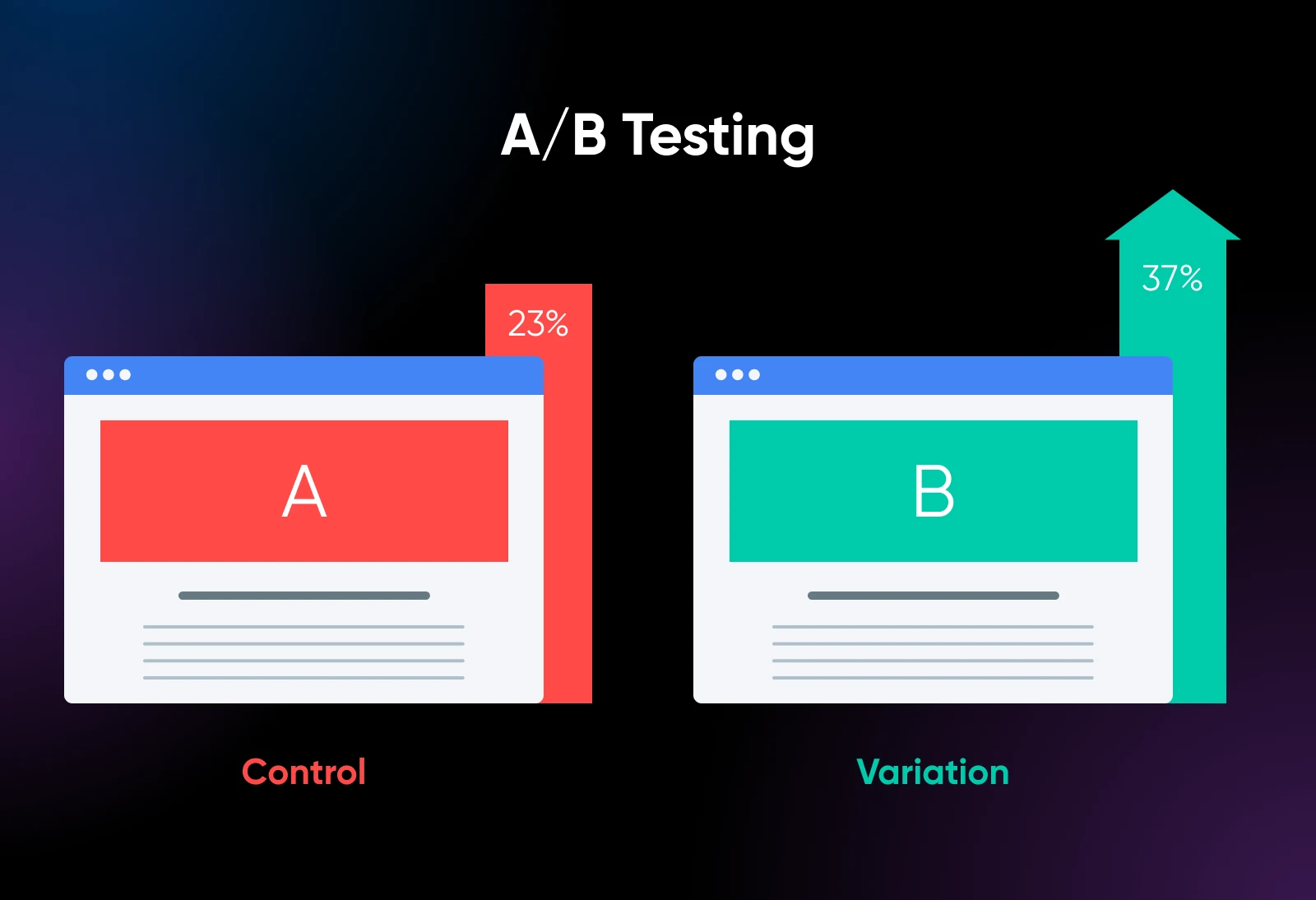
Content Marketing Techniques To Drive Traffic
Publishing content is one of the best ways to attract new visitors and retain your existing audience.
Here are some playbooks to follow:
11. Answer Niche-Specific Questions
No matter where in the buying cycle your potential customers are, they’re going to have questions. By delivering answers, you can attract search traffic and leave a strong first impression.
To figure out what your customers want to know, head to Google. Search for your topic, and the autocomplete will serve up some ideas. You can also study the People Also Ask boxes (or PAA boxes).
If you want to collect data straight from the search results, use a Chrome plugin such as SEO Minion. Freemium tools like AlsoAsked and AnswerThePublic can help you explore further.
Then, use all this information to build content that serves your target audience.
12. Publish Evergreen Content
Evergreen content is pretty much what it says on the tin — it’s content that can attract people to your website all year round. This type of content also tends to attract a consistent stream of traffic over time.
Some of the most successful formats include:
- How-to guides
- Q&As and FAQs
- Step-by-step tutorials
- Ultimate guides
- Product reviews and round-ups
- Training guides

To ensure your evergreen content doesn’t turn brown and wither away, make sure to review these posts every so often and keep them updated.
13. Repurpose and Recycle
Content shouldn’t be a one-and-done deal.
By repurposing and recycling your content across different channels, you can get more bang for your buck. That means more traffic for time spent.
Need a few ideas? Here are some ways you can repurpose your content marketing:
- A presentation can be recorded and uploaded to YouTube or a podcasting service.
- The same presentation can be transcribed using a service like Otter.ai and edited into a blog post.
- Visual content from blog posts can be repurposed for social media.
- Blog posts can be sent out to your email marketing list.
- Documented internal processes can be turned into white papers.
- Blog posts can be combined to create entire ebooks.
- You can curate your team’s best tweets for guides and roundups.
The list is almost endless. The more places your content appears, the more chances you have to drive traffic back to your site.
14. Create Expert Roundups
Another tried-and-tested traffic earner is expert-led content. This is where you ask big names in your niche to share their insights on a particular topic.
Experts generally have something to promote, so it’s relatively easy to persuade people to share their thoughts. And they’re likely to promote your post because they are featured. It’s a win-win for everyone.
You can find experts in your industry to interview using tools like Ahrefs, BuzzSumo, and Pitchbox.
15. Publish Shareable Resources
Blog posts aren’t the only type of content that can bump up your traffic metrics.
Cheat sheets, guides, infographics, and reports are popular with visitors and are super shareable. This means you’re more likely to earn referral traffic from these resources than from a regular blog post.
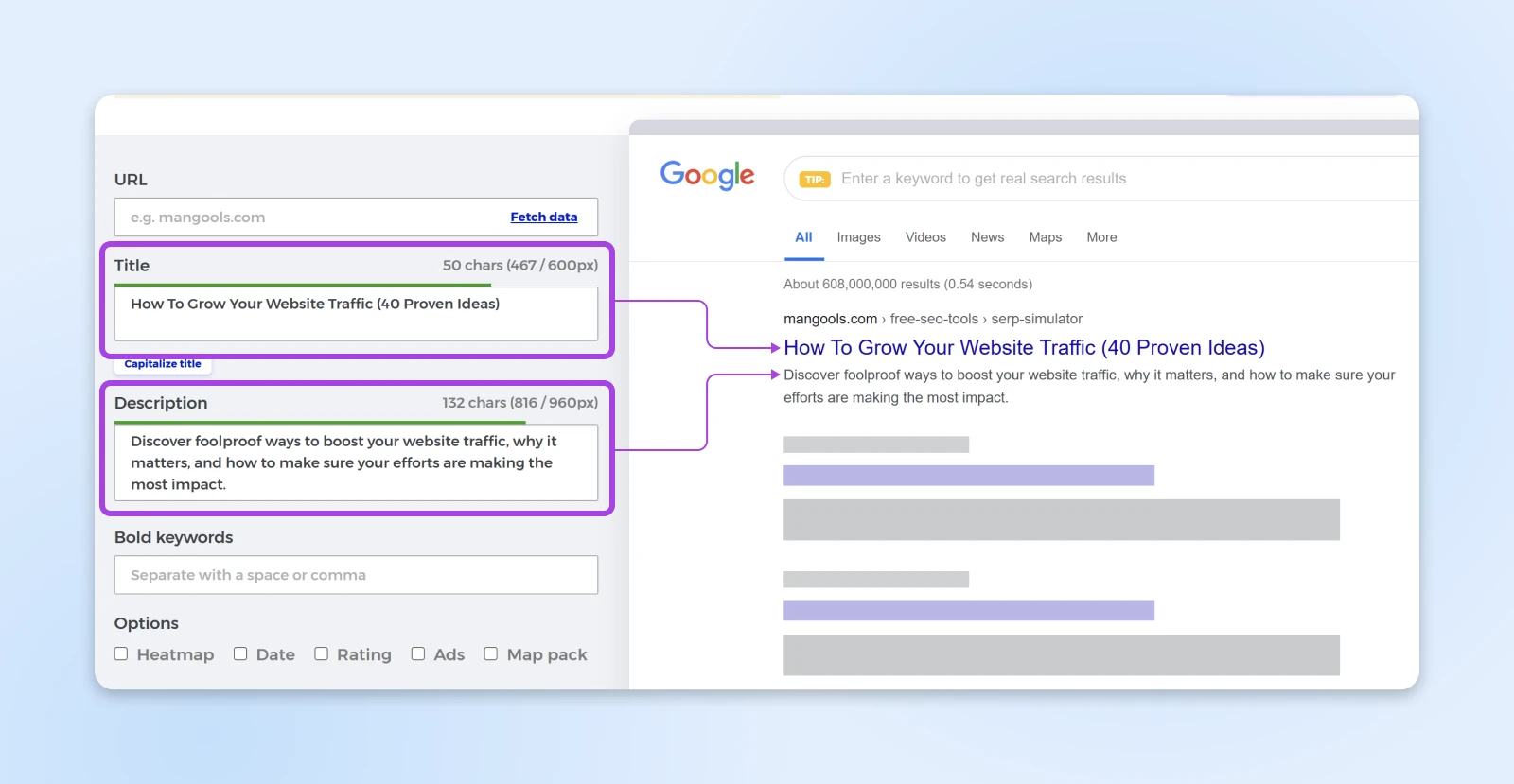
The same goes for free tools. Say your site is aimed at book lovers. You could create a simple recommendation engine and host it on your website.
Your users will love it, and they’ll probably tell their friends.
16. Start a Podcast
Maybe you’re already publishing great written content –What now? Well, you could try moving into other media.
Podcasting is hot right now, and there are still loads of niches that haven’t been filled. If you can build a successful show, you have the opportunity to pull in a whole new audience for your website.
A strong podcast can also indirectly boost your website’s traffic. For example, you can encourage listeners to sign up for your mailing list and insert backlinks to content on your website in the show notes. You can even repurpose episodes as blog posts.
If this sounds like a lot of work, don’t worry. WordPress offers a no-frills guide on hosting a podcast on your site that you can then share on Apple Podcasts and Spotify!
17. Set Up Your Own YouTube Channel
With over 2.49 billion active users, YouTube is a great place to reach new people and bring them back to your website.
After setting up your channel, try recording some tutorials or capturing conversations with an expert in your team. Behind-the-scenes videos are often popular, as well.
You don’t even have to appear on camera. Many “faceless” channels have seen success, using animations and stock imagery to keep viewers entertained.
When you upload your videos, include a link to your website or a specific page in the video description. You can also promote your website within the video by asking viewers to subscribe to your newsletter, or to visit your site for more information.
18. Offer a Free Online Course
Much like the other resources we mentioned, publishing a course on your website gives people a reason to visit.
At the same time, it allows you to prove your expertise. This establishes your website as the go-to destination for knowledge within your niche.
You can get another benefit out of this tactic. Offer your course free, but ask people to join your email list for access. Boom, triple traffic win!
19. Become a Webinar Host
Webinars are essentially live online tutorials. Many small business owners use them successfully to attract potential customers.
The gameplan looks like this:
- Think up a topic that your audience is interested in.
- Prepare a presentation on that topic.
- Schedule a time for your webinar.
- Promote the event and encourage people to enter their email for an invite.
- Deliver the webinar, and include a pitch for your products or services.
- Follow up with email marketing, directing people to your new content.
If the sign-up form for your webinar is hosted on your website, you should even see some additional traffic before the event.
20. Invest Time in Outreach
Influencers aren’t the only people that can help to boost your new content. Journalists, bloggers, and other websites in your niche are your ticket-to-traffic town.
The trick here is to do a little outreach.
Start by building a list of people who might be interested in sharing your content, then spread the word.
Expect a low response rate; this is totally normal. We would suggest building a list of hundreds of potential sharers and using a template email (with some personalization) to maximize your ROI.
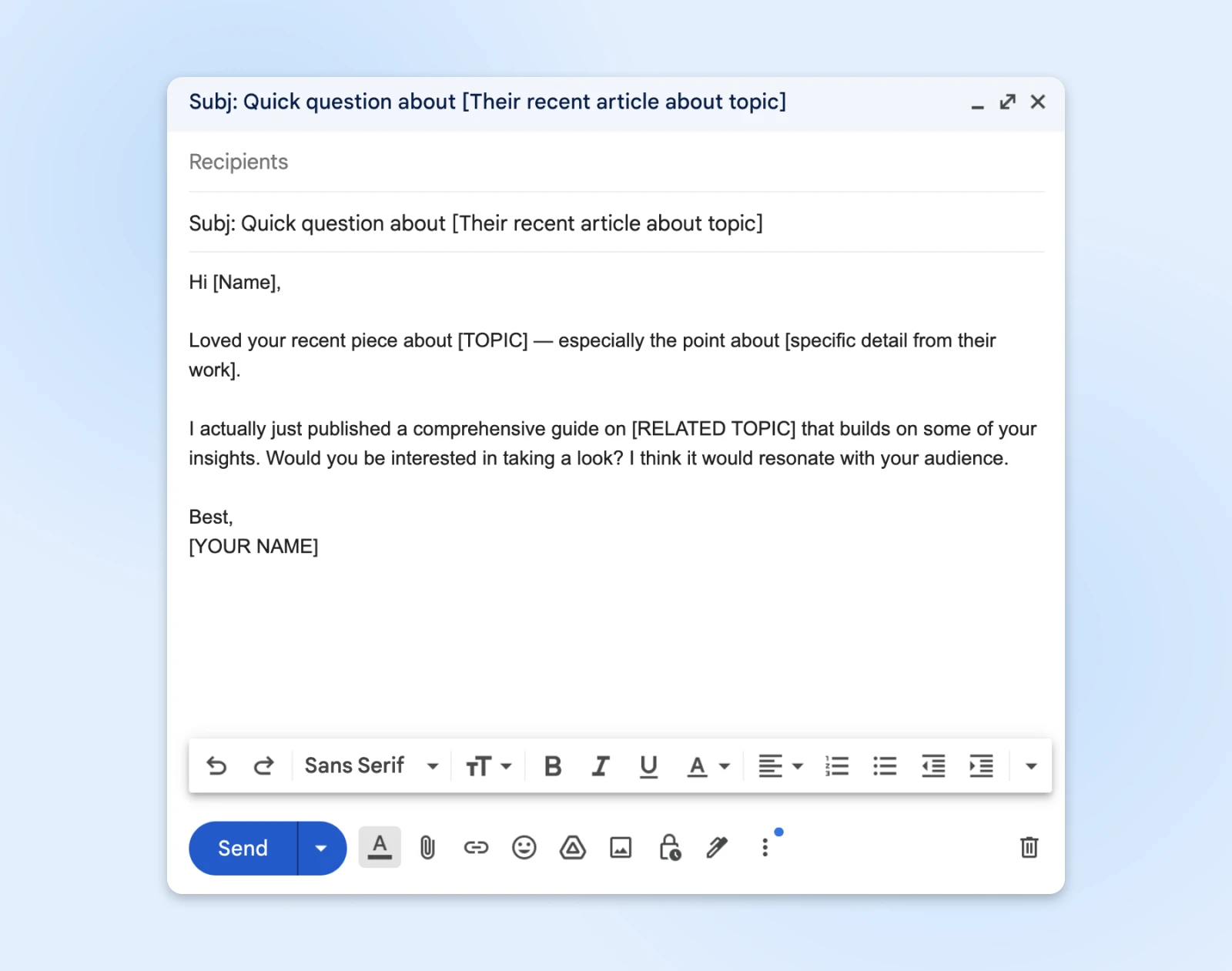
Not sure where to find your outreach targets? Here are two tools that can help:
Ahrefs Content Explorer
Part of the Ahrefs SEO toolbox, the Content Explorer helps you track down notable websites in your niche. You can also find:
- Pages that host similar content
- Top authors
- The domain rating (essential if you’re looking to build links)
- The number of domains that link to a piece of content
- Website traffic estimates
- Who tweeted the content
BuzzSumo
If you want to track down some social influencers, BuzzSumo is your friend. This platform lets you see:
- Trending and popular content for your chosen topic
- Social stats around those articles (including Facebook, X, Pinterest, and Reddit stats)
- Journalists that cover the type of content you’ve created
SEO Tips for Attracting More Traffic
If you put some effort into SEO, you’re likely to see your search traffic growing over time. Here are some best practices to try:
21. Find Better Keywords
Keyword research is a vital part of SEO. If you’re not optimizing your site for the terms that your target audience is searching for, you’re unlikely to see much organic and paid traffic!
To get it right, you’re going to need a dedicated SEO tool for research.
The best free option is Google’s Keyword Planner. It covers all the basics, but it’s a little limited.
If you’re serious about SEO, invest in something like Semrush or Mangools. Both platforms provide a complete suite of tools for researching search data and optimizing your content.
Once you’ve set up your chosen tool, turn your attention to three key metrics:
- Relevancy
- Search volume
- Competition
Let’s say you’re working on a website that sells women’s shoes. Relevant keywords might include:
- Women’s sandals
- Women’s strappy sandals
- Flat women’s shoes
- Women’s shoes 3-inch heel
- Women’s ankle boots
Whereas these keywords are irrelevant or too general:
- Shoes
- Men’s shoes
- Children’s shoes
- Women’s tops
Next, you should look at the search volume. This is the number of people searching for a particular keyword within a certain time frame (usually monthly). Higher search volume translates to greater potential to drive traffic to your site.
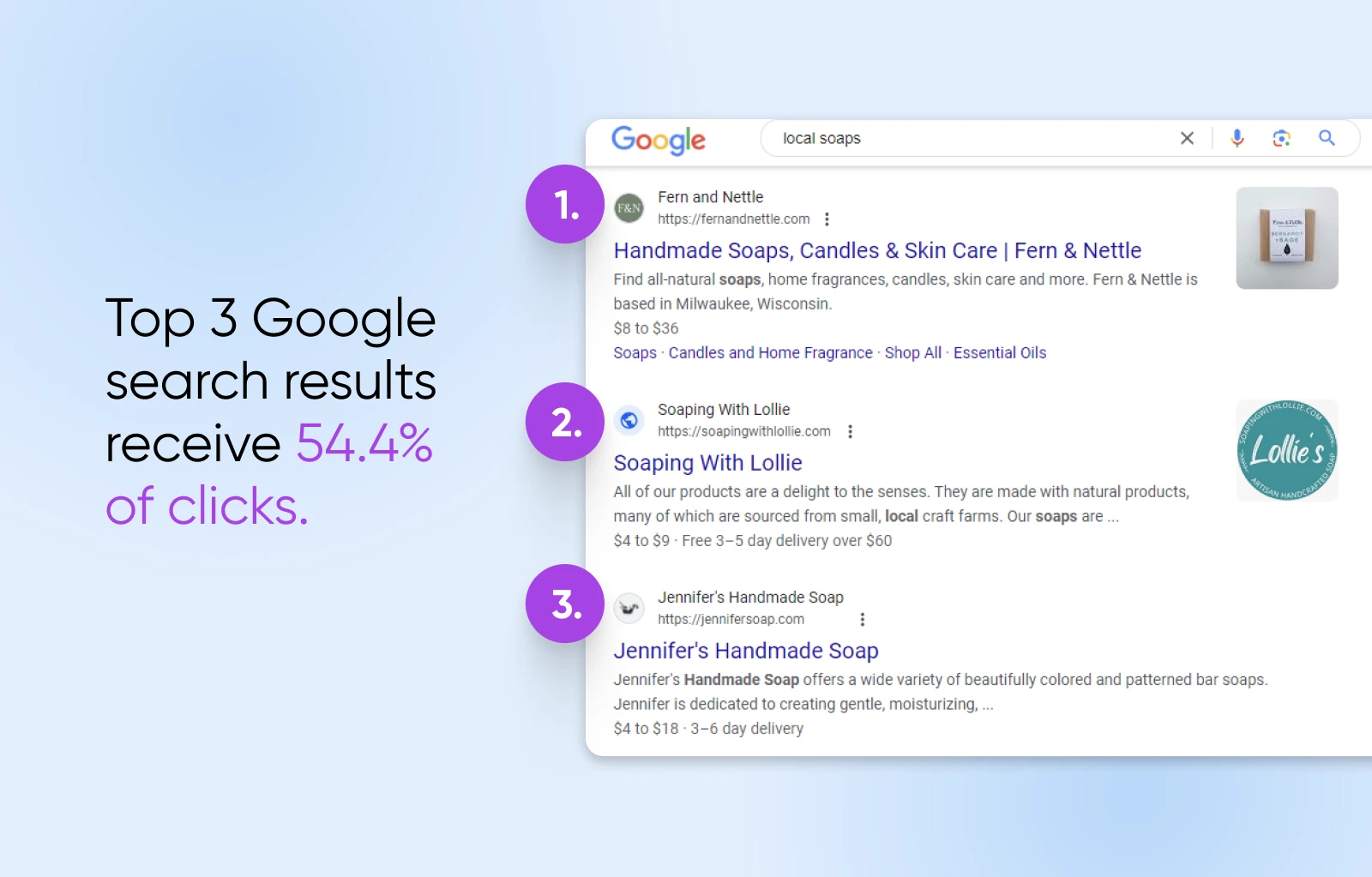
However, search volume alone isn’t enough to determine whether a keyword is the right choice for you. You also need to consider the competition.
Keyword competition is a score that tells you how tough a keyword is to target. Generally speaking, high competition makes it harder to rank, and vice versa for weak competition.
Take a deeper dive into SEO research with our dedicated guide.
22. Learn From Your Competition
Where are your competitors getting their traffic from? The answer could help to inform your own SEO strategy.
Competitor analysis reveals all. This process covers website traffic sources, backlink profiles, and social media activity. By studying the metrics of other websites, you can learn from their successes and avoid their mistakes.
Most SEO tools have a competitor analysis function. If you’re only interested in snooping over the fence, SimilarWeb is a great standalone solution that lets you check traffic for any URL.
23. Optimize Your Existing Content
Having completed keyword research, you should have a list of terms to target.
The obvious next step is to create content that is optimized for these keywords. However, don’t forget about the content you already have:
- Include keywords in your headers and body content.
- Make your meta descriptions keyword-rich.
- Add keywords to alt titles for images.
- Insert internal links to relevant pages wherever you see keywords in your content.
Put together, these small adjustments should help lift up your site in the search results.
24. Generate Schema Markup
Schema markup is like a secret language for search engines, helping them to understand your website’s content more precisely.
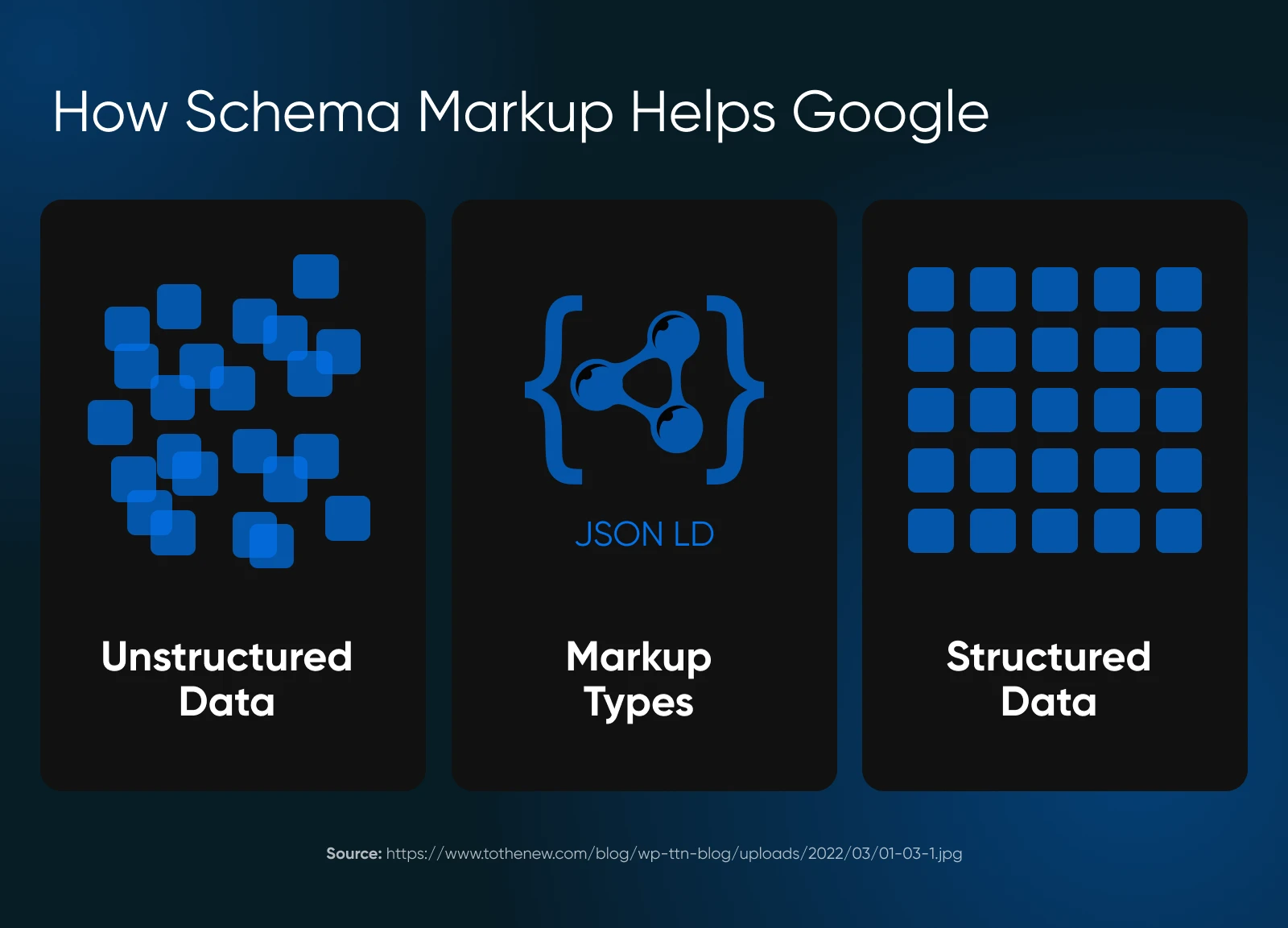
By adding this special code to your website, you can make your content more attractive to search engines — potentially helping you earn more clicks.
Creating schema markup is surprisingly simple.
You can use tools like All In One SEO and TechnicalSEO.com to generate codes for key pages like your homepage, product listings, or main content. Focus on the most relevant schema types for your site, such as local business or product information.
Start with your most important pages and use Google’s Structured Data Testing Tool to verify your markup. While it won’t instantly boost your rankings, schema markup is an easy way to give your website a subtle SEO advantage.
25. Make Technical Improvements
Even if your content is fully optimized for search, you might not rank well if you have underlying website performance issues.
Google and other search engines tend to mark down sites with glaring technical errors, meaning they end up with reduced organic search traffic.
How do you go about identifying on-site technical issues? It generally starts with a website crawler. There are quite a few around nowadays, but when it comes to cost and usability, we have two firm favorites: Screaming Frog and Sitebulb.
Website crawlers (or auditing tools as they’re also known) will crawl your website, follow links, and extract data. They can tell you what can be improved on your site and what’s just plain wrong — including duplicate content, orphaned pages, accessibility issues, structured data problems, and a whole host of other issues.
Some crawlers can even tell you how to fix these problems.
If you don’t feel confident enough to implement technical improvements yourself, our SEO marketing experts are ready to help!
26. Exchange Backlinks
Backlinks are links from other websites that point back to your own. They are an important part of any SEO strategy because they help search engines like Google to understand which sites are popular and relevant.
In turn, this can help your website rank higher in SERPs, making it more likely that people will find and visit your site.
There are a few different ways to earn backlinks. One is to create high-quality content that other people will want to link to. This could be a blog post, an infographic, or even just a helpful how-to guide.
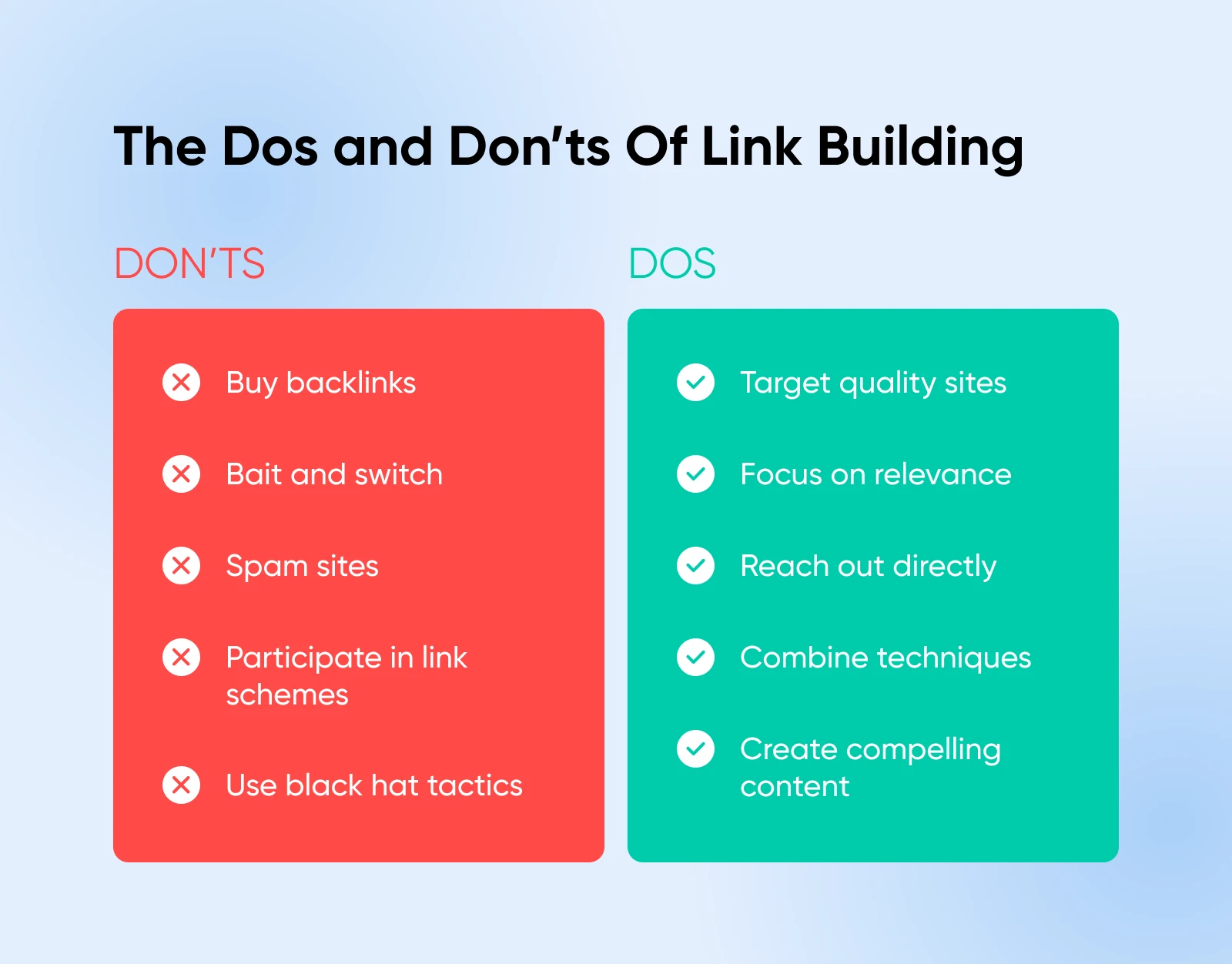
You can also reach out to other website owners and ask them if they’d be interested in linking to your content.
However, it’s important to remember that not all backlinks are created equal. It’s generally considered more valuable to have a few high-quality backlinks from reputable websites than a bunch of low-quality links from less popular sites.
27. Set Up Your Google Business Profile
Your Google Business Profile (GBP) is a free digital billboard for your business on Google Search and Maps. It delivers essential info about your business to potential customers who are searching nearby.
To get the most out of GBP, you need to claim and complete your profile. The process is really easy: just create an account, verify your business, and fill in your details.
You have the opportunity to showcase photos, customer reviews, and special offers on your profile. This makes business seem way more appealing than the bare-bones listings, meaning more people are likely to visit your website.
28. Optimize Your Website for Voice Search
Voice search is an increasingly popular way to find things online. Around 30% of online users already use voice search on their devices, and this figure is slowly growing over time.
It’s also a potential source of organic search traffic. If you can optimize your site for search, you might just leap ahead of your competitors.
To make your website suited to voice search, first make it mobile-friendly and responsive. Why? Because most people use voice search on mobile devices. You want these folks to have a good experience when they land on your website.
Second, use natural and concise language. This will help your site come up in more conversational searches and is ideal for voice technology assistants like Siri and Alexa. Try to format your content so it can be used as the answer to someone’s spoken question.
29. Create an FAQs Section (or Three)
FAQs are more than just a helpful customer service tool; they’re an SEO goldmine.
By answering common questions related to your business, you provide the kind of content that search engines love. It’s like giving them a cheat sheet to understand your niche and expertise.
FAQs naturally incorporate long-tail keywords — those longer, more specific phrases people use when searching. This helps you to rank for a wider range of queries, and attract more targeted traffic. It’s like casting a wider net to catch more of the right kind of fish.
Plus, FAQs keep visitors on your site longer. This signals to search engines that your content is engaging and relevant. In turn, this can boost your rankings and improve your overall SEO performance, driving more of that all-important organic traffic.
30. Build a Knowledge Base
Have a product that people need help with? Building a knowledge base is an excellent way to boost your website’s SEO while providing valuable support to your audience.
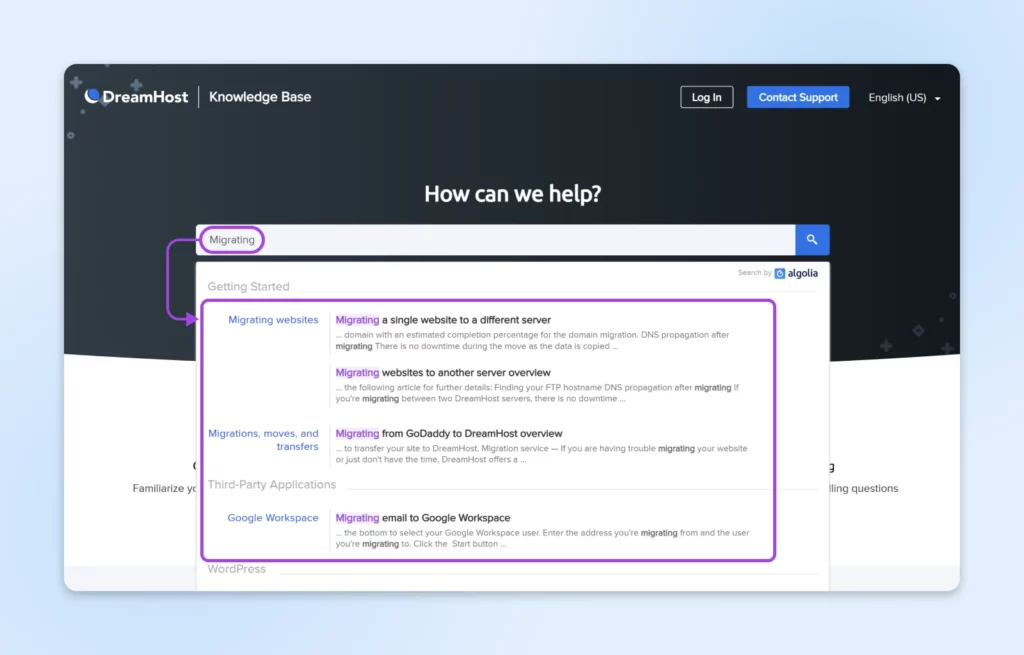
A well-structured knowledge base naturally incorporates a wealth of relevant keywords, increasing your chances of ranking higher in search results. It’s like planting a diverse garden that attracts a variety of beneficial insects.
This wider keyword coverage translates to more organic traffic flowing to your site.
As a secondary benefit, a good knowledge base encourages visitors to explore your site further. Again, this increased time on site signals to engines that your site is worth promoting.
While content marketing and SEO can be very effective, they don’t tend to produce results within days or even weeks. In the meantime, you can promote your website with these proven strategies:
31. Participate in Online Communities
Getting involved with online communities can not only drive traffic to your site, but also help establish your business as an expert in its niche.
In our experience, the platforms that drive the most traffic are Quora and Reddit.
Quora is the site for answering potential customers’ questions. Its pages often rank well in Google, giving you more visibility than you might get via your own site.
Reddit is an internet behemoth and, according to Statista, receives around 2.2 billion visits per month. If you can find subreddits that fit your niche, contributing valuable insights can give your traffic stats a major boost.
With both sites, make sure your answers are impartial. Never aggressively push your products or services directly, or you’lll get flagged as spam.
32. Be Helpful on Forums
Many marketers look down their noses at forums, largely because they’ve long been used as an “easy” link-building tool.
But forums aren’t all spam. They can be a legitimate means of driving traffic.
As with social platforms, the key is to be genuinely helpful in your contributions. In return, you’re likely to see an uptick in interest in your site. Make sure to:
- Avoid posting links to your content too often, as this could be seen as spammy.
- Give detailed answers that prove you’re an industry expert.
- Share high-quality posts regularly.
So, how do you find these forums? A quick Google search usually reveals some good options. You could also use specialized tools like Find A Forum and SimilarWeb to narrow down forums within your niche.
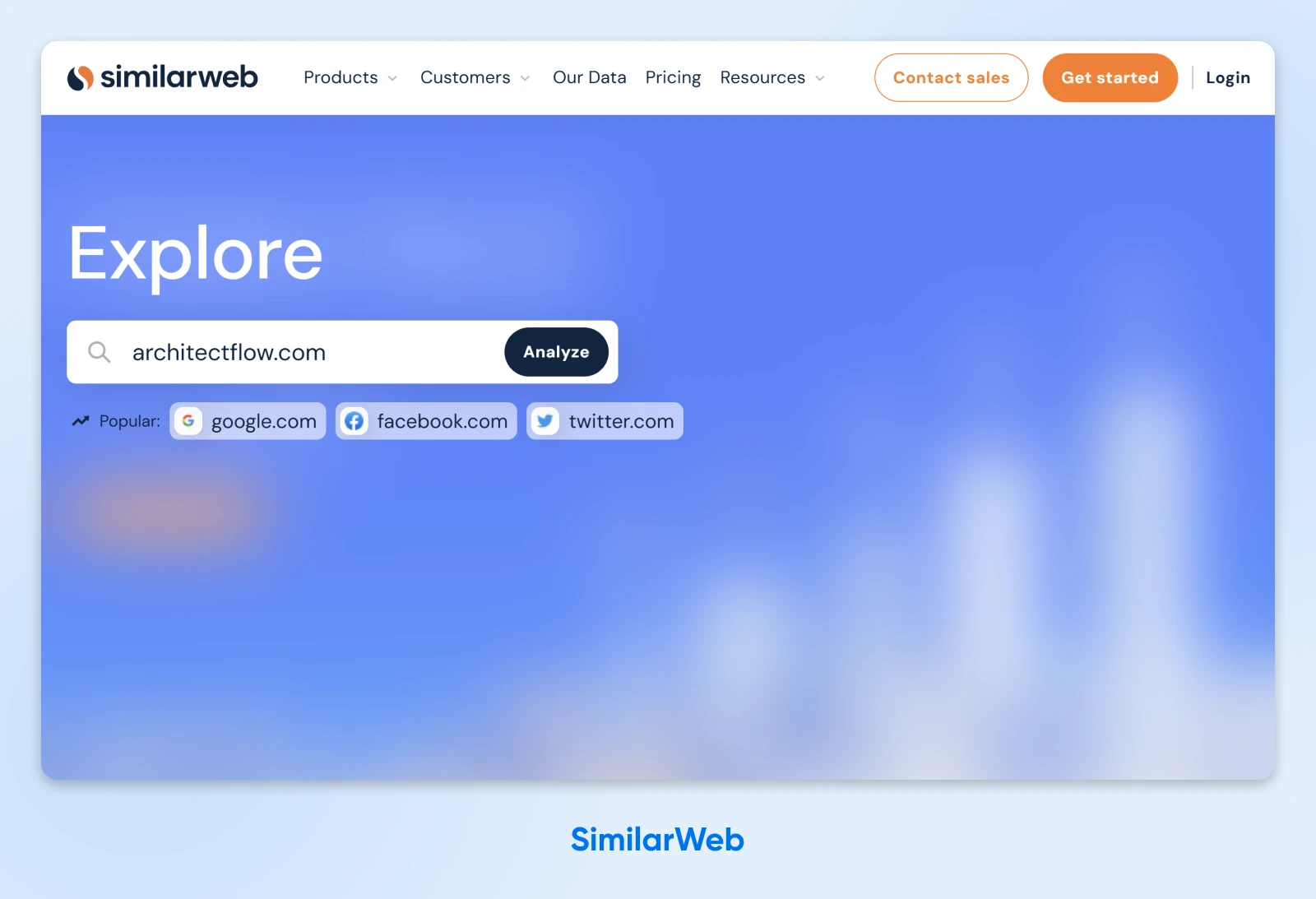
33. Add a Community to Your Site
What’s better than joining a forum? Creating your own.
This could be a standard forum, or more of a curated community like Product Hunt. Either way, you’re likely to attract users to your website and keep them coming back.
As your community grows, content posted by your users will show up in search results and on social platforms. In turn, this should drive additional traffic.
Just be aware that communities can be time-consuming to manage, in part because you need to moderate user-generated content.
User-Generated Content (UGC)
User-generated content (UGC) is any content that customers post on social media to promote a certain brand or business. This might include a review, testimonial, image, or video that features a product on a personal account.
34. Sponsor a Newsletter
Just as your own email list can drive traffic, so can a newsletter owned by someone else.
If you have a bit of money to invest, you could consider sponsoring a third-party newsletter to reach more people.
This approach can work really well if you partner with a publisher that has an audience that’s fairly narrow and well-aligned with your site. For instance, it’s a much better idea to sponsor a small industry newsletter than a general interest newsletter with millions of subscribers.
As part of your sponsorship, make sure to plug your site or your products, and get a link to your most important content.
35. Run Online Contests or Giveaways
You probably won’t want to run a giveaway every week. As a one-off, it can boost your online traffic significantly.
Initially, this will be new visitors wanting to enter. Get them to subscribe to your email list as part of the entry process. You can then follow up later with updates about your new content.
Contests and giveaways create a sense of urgency and excitement around your brand as well. This can generate enough noise to encourage more people to check out your site.
36. Experiment With PPC Campaigns
PPC (pay-per-click) campaigns are your fast lane to targeted traffic. This type of advertising helps you to get off the ground until your organic traffic takes off.
The secret with PPC is to start small. Create super-focused campaigns that target specific keywords and demographics, and treat each dollar you spend as market research. Once you can see how much traffic your content is generating, you can choose where to place your efforts.
Make sure to set up some landing pages for your PPC traffic. These pages should speak to exactly the type of person you’re targeting with your ads. For instance, if someone clicks an ad for “blue widgets under $50,” give them exactly what they asked for.
You can convert these clicks into sales, or simply get people to sign up for your emails.
37. Try Some Social Ads
Getting noticed on social media can feel like an uphill battle — in part because these platforms want to incentivize businesses to pay for views.
Sure, the system is rigged, but the upside is that social ads are generally more affordable than Google ads. According to data collated by WordStream, the average cost per click (CPC) on Facebook across all industries is $1.72.
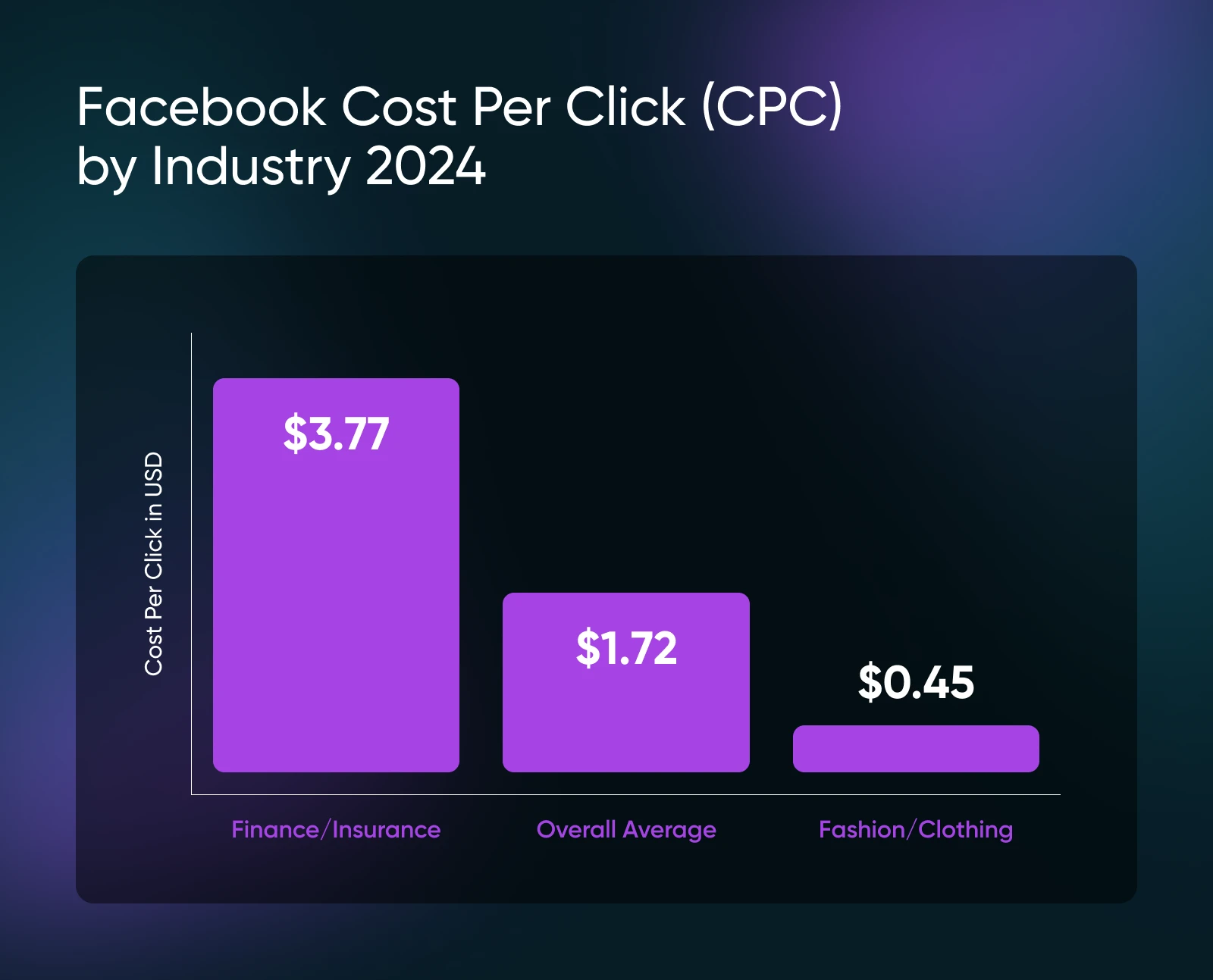
This cost does vary from industry to industry. Fashion and clothing brands pay the least, at approximately $0.45 a click, whereas finance and insurance advertisers pay around $3.77 per click. Instagram ads are generally cheaper.
The other benefit of using social ads is demographic targeting. While Google knows roughly who is searching, platforms like Instagram and Facebook have a deeper knowledge of users. This makes it easier to target specific groups of people.
38. Run Retargeting Ads
Retargeting is a particular type of social media advertising that targets people who have already shown some interest in your brand.
Think of it as a friendly reminder, like a store clerk who remembers what you were looking at last time.
To set up retargeting, add a tracking code to your site, known as a retargeting pixel. This invisible element makes a record of who has visited.
You can then build a campaign with your chosen social platform, picking out the exact people you want to reach. For instance, you could show ads to anyone who visited your site in the last 30 days or focus on people who looked at specific products but didn’t buy.
Keep your message straightforward — “Still interested in that blue widget?” or “Here’s the guide you were reading!” You don’t need complex strategies to see results; sometimes a gentle nudge is all it takes to bring someone back to your website.
39. Start an Affiliate Program
Affiliate marketing is about incentivizing other people to promote your products or services by giving them a cut of every sale.
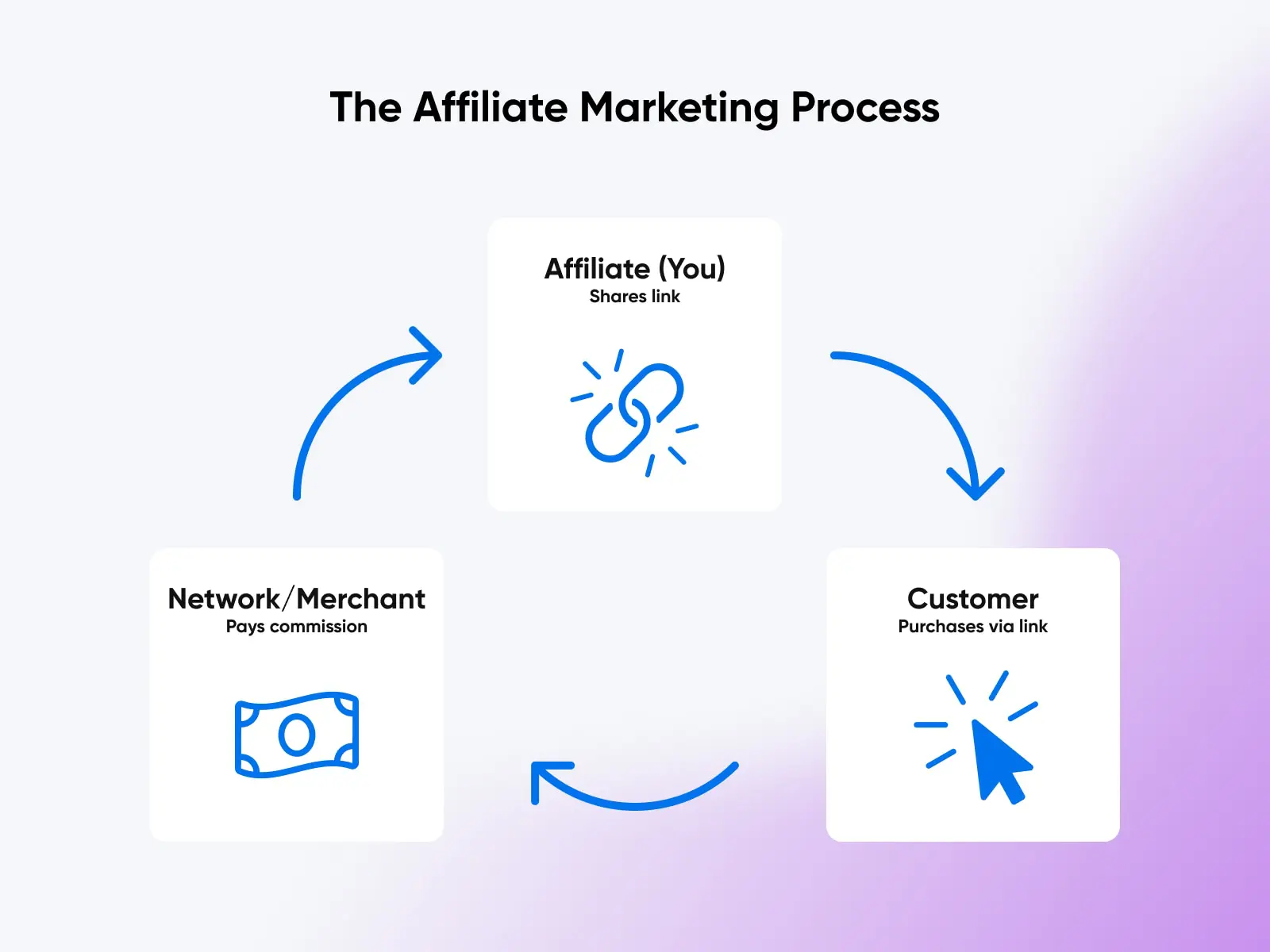
Starting an affiliate program is a great way to get more people to visit your site. By offering affiliates a commission on each sale they generate, you can encourage them to promote your business to their audience.
This can help you reach new customers and grow your business while also widening your professional network.
40. Harness Your Connections
Just launched a new site or published a major update? It’s totally fine to reach out to your contacts (both IRL and online) and ask them to promote your efforts!
This technique works best if you concentrate on established connections — friends, family, strong professional contacts, and so on. In most cases, people will be all too happy to help. It costs them very little to post a link, after all.
How To Measure Website Traffic
With any luck, applying some of the techniques mentioned above should drive people toward your site. To check whether this trend is actually happening, it’s important to keep track of your traffic over time.
By tracking key metrics like page views, bounce rates, and user behavior, you can see what’s working and make decisions about your site based on data.
Here are some of our favorite traffic checker tools:
- Google Analytics (Free): A powerful and widely-used tool that provides detailed insights into your website traffic, including where visitors come from, how they navigate your site, and which pages perform best.
- Google Search Console (Free): Helps you track your site’s performance in search results, monitor keyword rankings, and identify technical issues that may affect traffic.
- Matomo (Free & Paid): An open-source alternative to Google Analytics that offers privacy-focused analytics with customizable features.
- HubSpot (Paid): A complete marketing platform with built-in analytics to track traffic, leads, and conversions. Ideal for small businesses looking for an all-in-one solution.
- Semrush (Paid): A robust SEO tool that not only tracks traffic but also provides insights into competitors’ performance, keyword rankings, and backlink profiles.
- MonsterInsights (Paid): A WordPress plugin that simplifies Google Analytics data, making it easy to view traffic stats directly from your WordPress dashboard.
Our recommendation: start with free tools to get a feel for analytics, and consider upgrading to paid options as your needs expand!
Ready To Drive More Traffic to Your Website?
With this epic toolbox at your disposal, you should be aiming for the stars with your website traffic!
Don’t get carried away, though. We wouldn’t recommend executing all of these techniques at once. Work through the list gradually and you should soon see website visitors streaming onto your site.
And with many of the ideas above, consistency is really important. While ad campaigns are one-hit wonders, SEO and content marketing are all about the long game.
As your traffic acquisition improves, be sure to check your hosting plan. The last thing you want is for your site to get overwhelmed.
At DreamHost, our shared and managed hosting plans offer unmetered traffic — so you never have to worry about success! Sign up today to try it for yourself.

Get More Visitors, Grow Your Business
Our marketing experts will help you earn more traffic and convert more website visitors so you can focus on running your business.
This page contains affiliate links. This means we may earn a commission if you purchase services through our link without any extra cost to you.
Did you enjoy this article?

